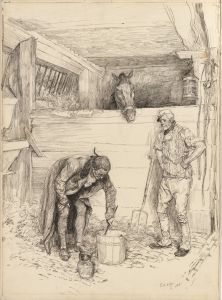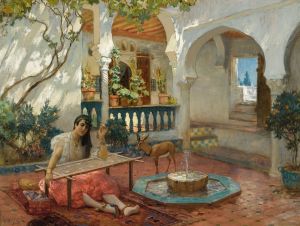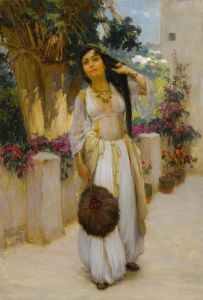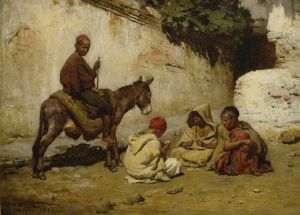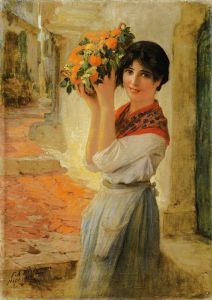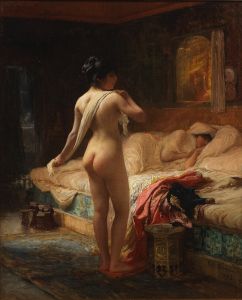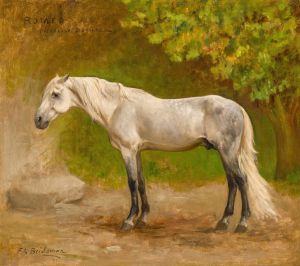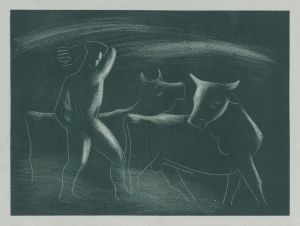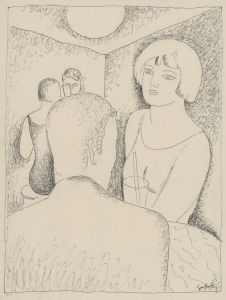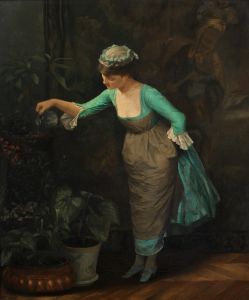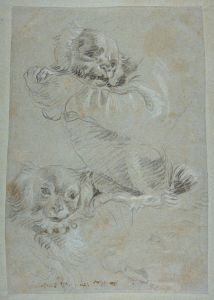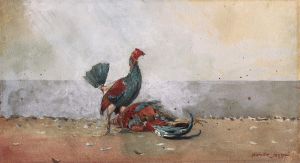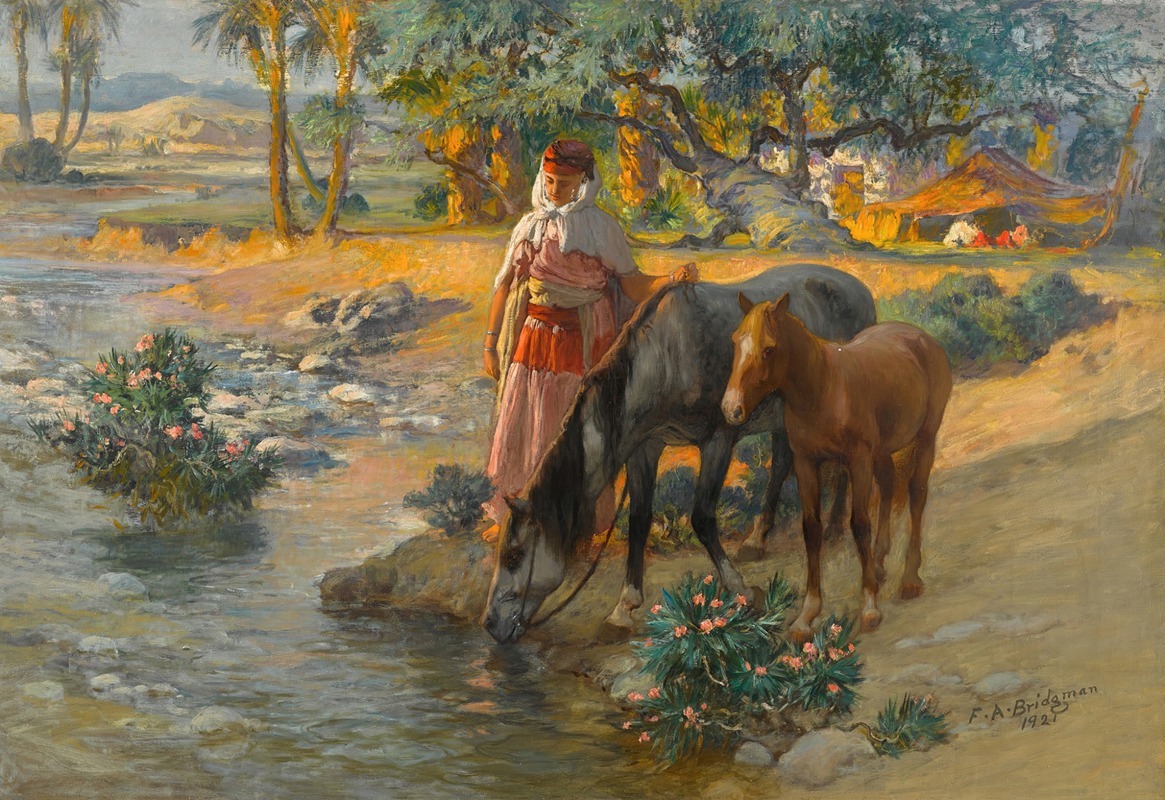
Watering the Horses
A hand-painted replica of Frederick Arthur Bridgman’s masterpiece Watering the Horses, meticulously crafted by professional artists to capture the true essence of the original. Each piece is created with museum-quality canvas and rare mineral pigments, carefully painted by experienced artists with delicate brushstrokes and rich, layered colors to perfectly recreate the texture of the original artwork. Unlike machine-printed reproductions, this hand-painted version brings the painting to life, infused with the artist’s emotions and skill in every stroke. Whether for personal collection or home decoration, it instantly elevates the artistic atmosphere of any space.
Frederick Arthur Bridgman was an American artist known for his detailed and vibrant depictions of Orientalist themes. Born in 1847 in Tuskegee, Alabama, Bridgman moved to France in the 1860s to study art. He became a prominent figure in the Orientalist movement, a genre that romanticized and depicted the cultures of North Africa, the Middle East, and Asia. Bridgman's works are characterized by their meticulous attention to detail and vivid use of color, capturing the essence of the scenes he portrayed.
"Watering the Horses" is one of Bridgman's notable works, showcasing his skill in rendering scenes of daily life in exotic locales. The painting depicts a tranquil moment where horses are being watered, a common and necessary activity in many cultures, particularly in regions where horses were essential for transportation and labor. Bridgman's ability to capture such moments with authenticity and grace is a testament to his deep appreciation and understanding of the subjects he painted.
The composition of "Watering the Horses" reflects Bridgman's keen eye for detail and his ability to convey a sense of place. The painting likely features a serene setting, possibly a riverbank or a water trough, where the horses are gathered. Bridgman's use of light and shadow would have added depth to the scene, highlighting the textures of the horses' coats and the surrounding environment. His palette, often rich and varied, would have brought vibrancy to the scene, drawing viewers into the moment captured on canvas.
Bridgman's travels to North Africa and the Middle East greatly influenced his work, providing him with firsthand experience of the landscapes and cultures he depicted. His paintings often reflect a romanticized view of these regions, a common trait among Orientalist artists of the time. However, Bridgman's work is also noted for its ethnographic accuracy, as he took great care to depict the clothing, architecture, and customs of the people he encountered with precision.
"Watering the Horses" fits within this context, as it likely portrays a scene that Bridgman either witnessed or imagined based on his travels. The painting would have appealed to Western audiences of the time, who were fascinated by the exotic and unfamiliar aspects of Eastern cultures. Bridgman's ability to blend artistic beauty with cultural representation made his works popular and sought after during his lifetime.
Frederick Arthur Bridgman's contributions to the Orientalist movement have left a lasting impact on the art world. His paintings continue to be appreciated for their aesthetic qualities and their ability to transport viewers to distant lands and times. "Watering the Horses," like many of his works, serves as a window into a world that captivated the imagination of 19th-century audiences and continues to intrigue art enthusiasts today.





